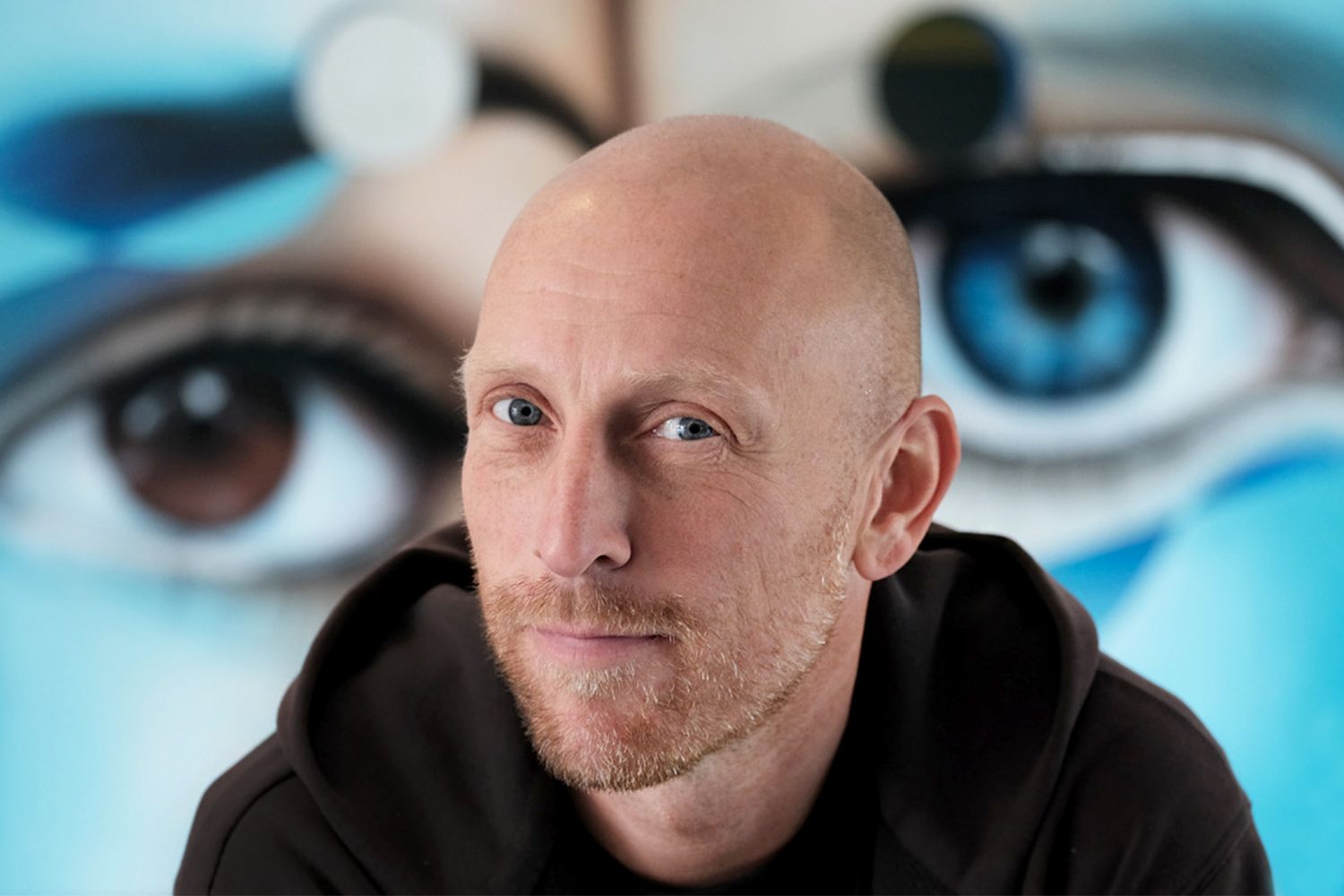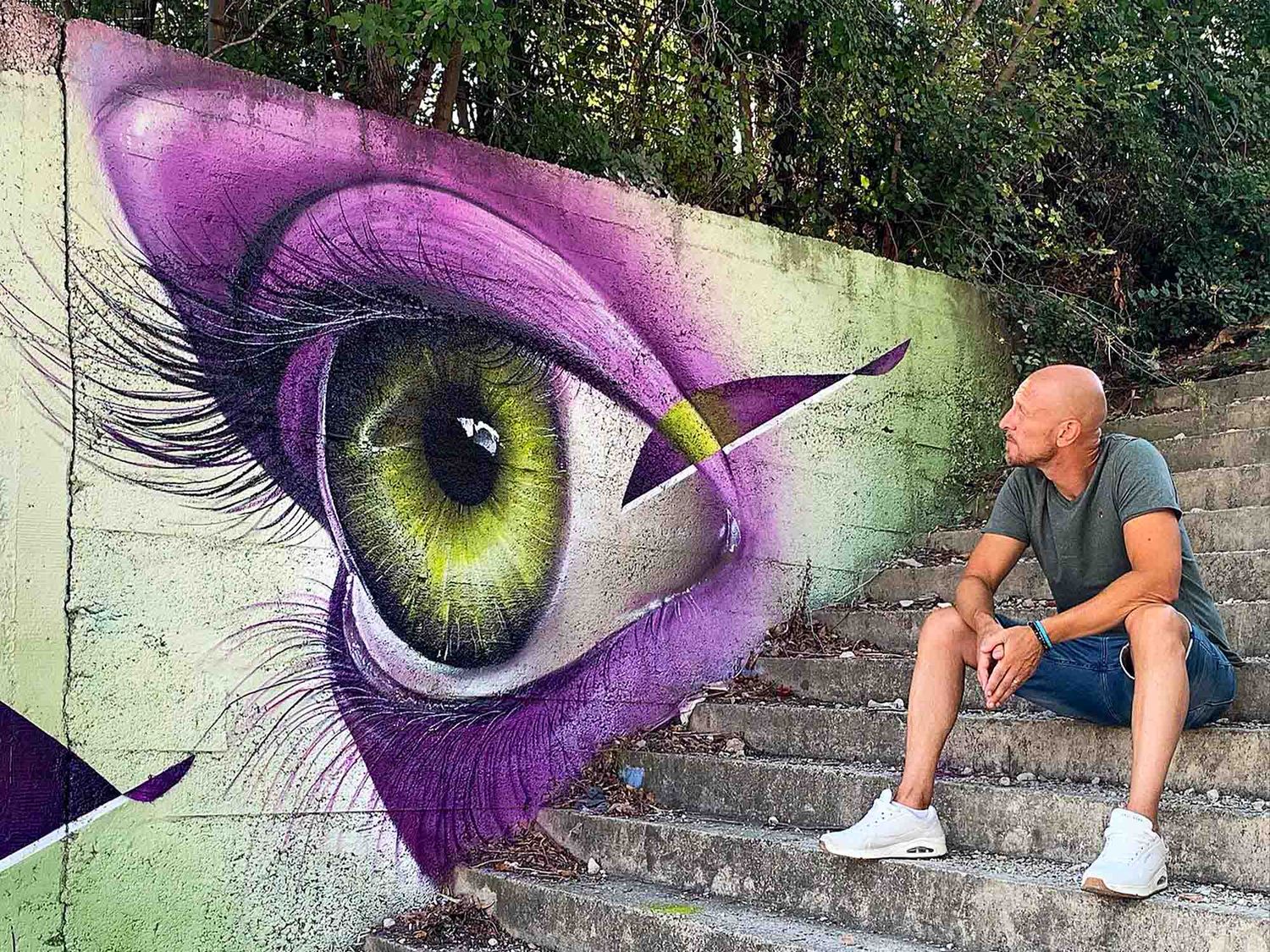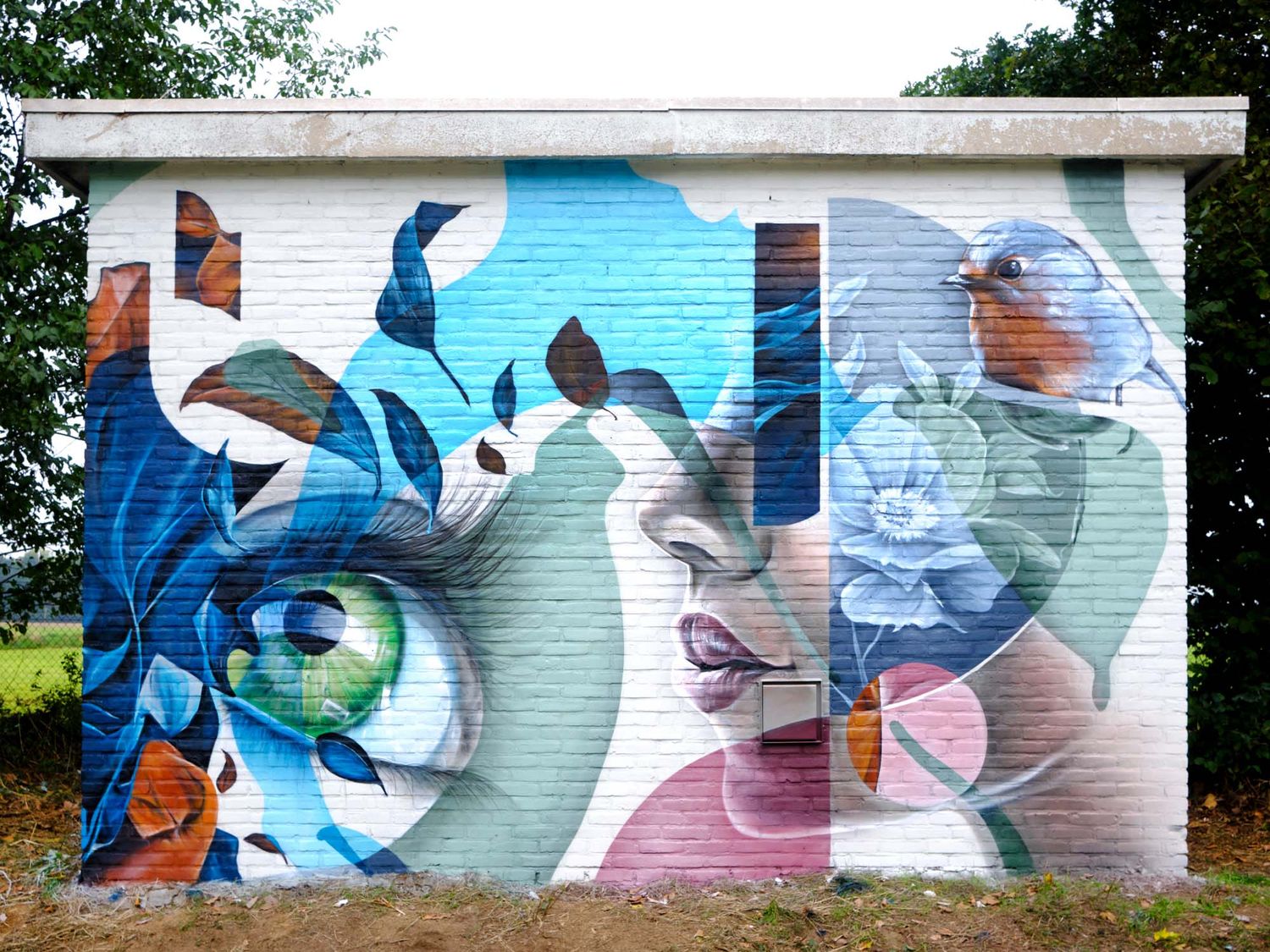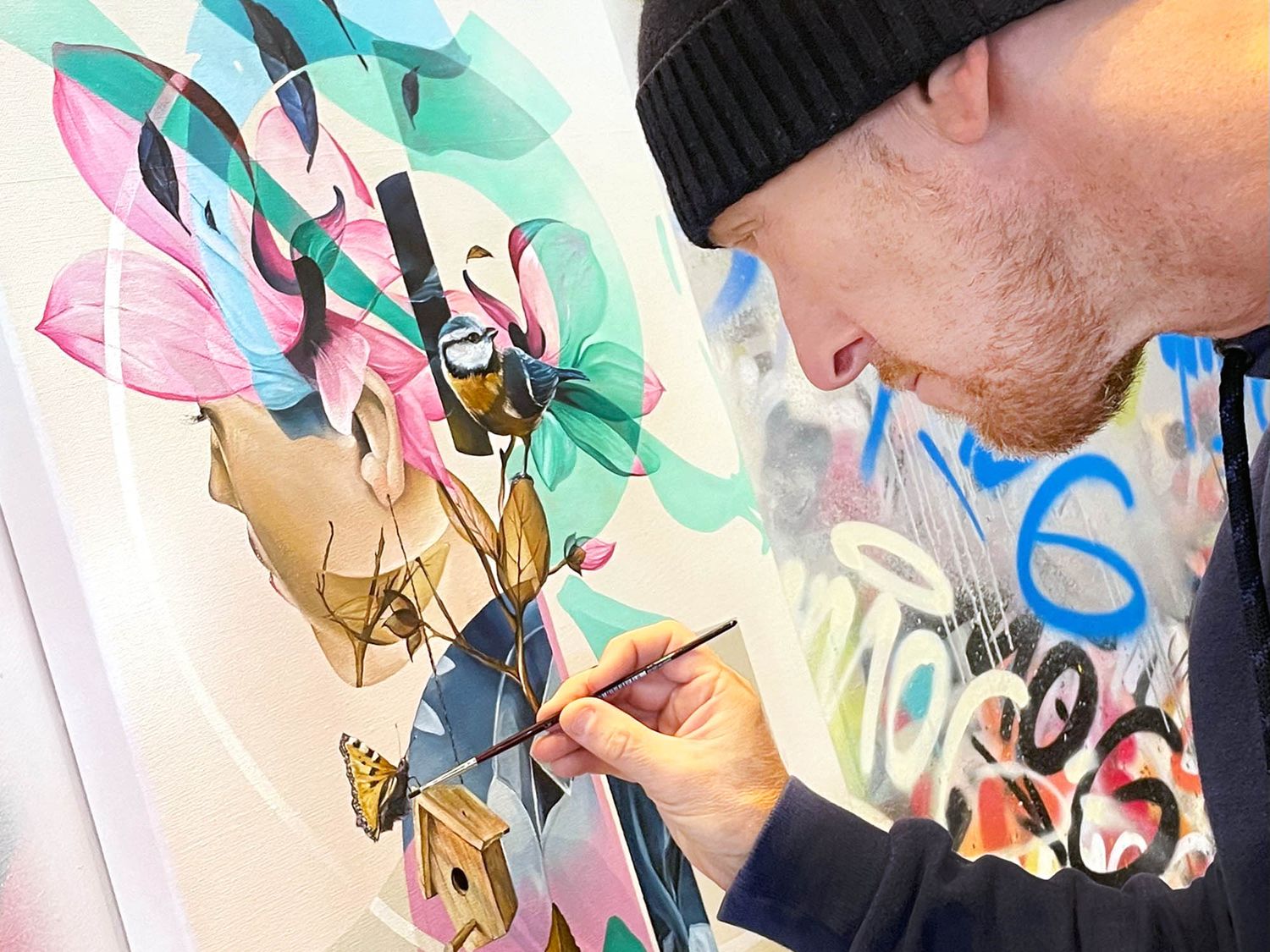
Gomad: “I paint nature because I want us to be at one with it”
Giulia Blocal • Posted on September 15, 2023
Originally from Sittard in the Southern part of Holland, the Dutch street artist Marcus Debie aka GOMAD pioneered Graffiti in his region and has since become one of the most acclaimed Dutch muralists worldwide. In this interview, the artist tells us how he developed his iconic photorealistic style, why eyes are the protagonists of his mural paintings, and what he wants us to observe in his surrealistic art with our own eyes.
How did you start with Graffiti?
In 1984, I saw the video documentaries “Style Wars” (by Tony Silver) and “Beat Street” (by Stan Lathan), respectively about Graffiti and breakdance in New York City. That’s when I discovered Hip-Hop culture, which was completely different from what I’d been following back then. I was listening to reggae, sometimes to rock, and then, all of a sudden, I saw those guys singing black music with a strong message, painting all the subways in New York, beat-boxing, breakdancing, scratching… It was really mind-blowing!

At that time, I was fascinated by something so pure and so expressive, Hip-Hop wasn’t simply a new subculture but an energy that was overflowing onto the streets. I wanted to be part of it, so I started writing my name in the streets. Back then, I was just writing the name MAD but I switched to GOMAD no less than ten years later. That’s how I became one of the first Dutch graffiti artists.
How did you move from graffiti lettering to muralism?
I’ve just grown into it. Like most of my peers, I started with graffiti lettering, then added a background, and afterward started drawing puppets next to my letters. Eventually, I realized that I liked characters more than letters, so I focused on the figurative element, turning my puppets into 3D figures, each time more and more realistic. At first, I was drawing characters that already existed, from Disney or TV.
It took me quite some time to develop my own style. The first time I felt I was painting something truly mine, was in 2016, which was actually 31 years after I started. The turnaround has been focusing on hands and eyes. I wanted them to be hyper-realistic because I had a teacher at art school who used to say that you can recognize a good artist from how they paint hands and eyes. If done wrong, hands look like sausages and eyes aren’t alive. I want my eyes to show emotions, be expressive, and communicate with the viewer. That is how drawing eyes became my trademark, I really wanted to nail them.

Moreover, since I’m color blind, eyes have always been special to me. I’m born with this condition, it is part of me, so I can’t say it is “more difficult” than something else. I know that I confuse different types of blue and purple hues and many other color combinations, but I still use those colors in my artworks, because as long as I hold a spray can with a color code written on it I know what I’m doing, I just can’t see it in the same way as other people. Over the years, I met other color-blind street artists, like Alex Senna who paint exclusively in black and white as a result of this condition, but I’ve never thought of not using colors for this reason. I just use them, I have always done it.
Walk us through your creative process: how do you develop the concept of a new mural?
I come from the advertising world for which I worked as a graphic designer in different agencies for 25 years, so I am very familiar with Photoshop. I did murals as a side job until I got more and more commissioned murals projects. Today, I am a full-time street artist, but I still use Photoshop to create my mural concepts. That is actually why my style is so realistic, my creative process always starts from actual photos, mostly photos of women, faces, eyes, hands, birds, and also other different types of natural elements.

Lately, from focusing on eyes and countenances I’m switching to full portraits and organic shapes like flowers. Lots of my work are actually all about nature. Being at one with nature is the underlying message in my murals: being aware of what we are doing to the planet and of the risks of climate change and pollution. And it is not just a mild message: I have actually taught myself to paint with acrylics and brushes, to give up the spray cans, which are bad for the environment and for my body too, they are poison even with a respirator mask.
What’s the difference -if any- between your street work and your studio work?
In a nutshell, my canvases are most of the time a smaller version of my murals. They are not more detailed, because my murals are already hyper-detailed and photorealistic, they are just smaller and they can fit into everybody’s houses. For example, the latest artwork I have created for Urbaneez is a 80x50 cm canvas made with oil painting (Moder Natur), which is the exact copy of a 20-meter-high wall I painted in Helsingborg for Pow! Wow! Sweden in 2021.

I started painting canvases in 2016, again that’s 31 years after I discovered Graffiti. At first, I painted my canvases with spray cans, I was using a stencil cap to do the thinner lines and seldomly adding some brush strokes done with acrylics. Then, in 2019, I fell off a scaffold: I was painting at a height of 4 meters, my bones shattered, and I couldn’t walk for seven months. That’s when I started using oil paint on canvas: I had never done it before, but that was pretty much the only thing I could do from the hospital bed. Once I learned how to use oil paint on canvas, switching from the spray can to acrylics was easy, and now I’m painting with brushes on walls. It makes me feel good because I know that I’m not polluting the planet through the massive use of spray cans while developing new techniques.
Discover the profile of Gomad and his available artworks.